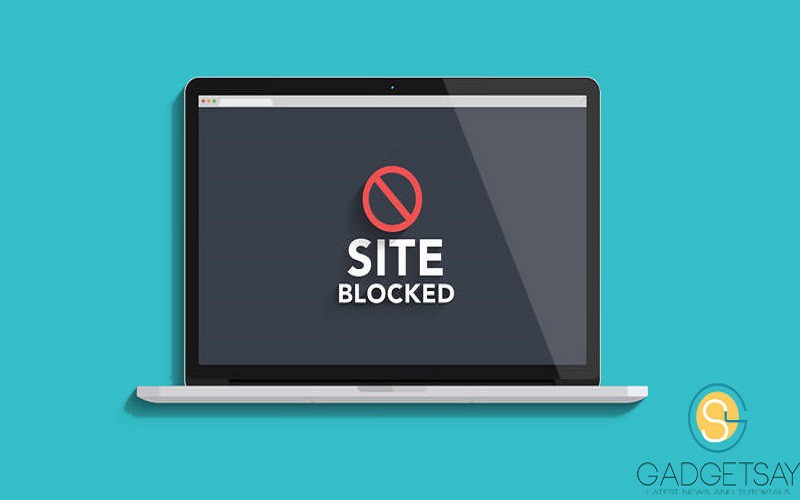A blocked website is always annoying, and governments are now engaging in content censoring more times than we were used to. However, if you also feel disturbed by the blocked websites in your office or school, we have listed some ways to access them still. While the reasons that initiate a blocked website can be reasonable sometimes, they are misused frequently by the authorities. Check out our list of 10 Ways To Access Blocked Websites:

1. Use VPN Virtual Proxy Network
It lets you connect your phone to secure connection to another network over the internet. It makes you access blocked websites via your home network and puts your IP address in a distant place. You even get to download the apps, gain access to blocked websites in your country and for unblocking websites in school. VPN functions as a tunnel that converts your data into garbage value for any random person to recognize. There are several free/cheap VPN services to choose from so you can enjoy an uninterrupted internet experience.
2. Become No One: Use Proxy Websites
In a professional setting, employers can limit your access to some particular websites. They can be sites for video streaming, social networking or even your email accounts. Not so many people are comfortable with this hence the need for proxy websites. What it does is it disguises the blocked site from the ISPs and grants you access to these blocked websites.
3. Replace URL With IP
Every website’s URL has an IP address, and the blockers of the site might’ve stored the URL and not the IP. To know the IP address for a particular website, you can do a ping domain(dot)com command in Command Prompt. Using IP is an easy way to gain access to blocked sites in your country or locality. Although, if the website IP is not visible then this method will not work.
You have to run CMD on your PC. Then type “ping www.websitename.com” and click Enter. This will immediately show you the IP address. Now go ahead and enter this IP address in your web browser’s address bar and hit Enter to surf “access denied” websites. These same tools and commands can also work on Mac, Linux and many more.
4. Alter Network Proxy In Browsers
Your school or institute might have nothing less than two proxies for its network. This makes some websites restricted on one proxy, but accessible in another. So proxy surfing to accessing blocked websites in your school can be tried out. Disabling the network proxy settings in our web browsers is not something difficult. You only have to locate connections/network in the settings of your web browser. Right there and then, you can click the no proxy option or use another one that’s providing unrestricted browsing at your college.
5. Make Use Of Google Translate
Not all countries and schools ban Google Translate. Maybe because it’s an education service and nobody sees it as strong enough to unblock sites at institutions or offices. So with it, you can scale through the barrier by converting the blocked website into some other language you do not know. Try Google Translate and experience this yourself. It is another natural means of accessing blocked websites. Microsoft’s Bing translation service can also come in handy in cases like this.
6. Use Extensions
If the websites that are blocked by your company are massive like Facebook or YouTube, then you should try these extensions. Hola and ProxMate are examples you can use. UltraSurf is also a great option as it lets you browse freely using its encrypted proxy network. It is vibrant enough to hide from lots of power to beat strong firewalls like Lightspeed.
7. URL Recasting
It is possible for a specific website to be hosted in VPN and not have a verified SSL installed. In such cases, head to address bar of your browser and type https://www.url.com instead of www.url.com or http://www.url.com. This change will instigate a security notice. Click on the Proceed Anyway option and access the website. This is not a specific method for a solution, but it works most times.
8. Replace Your DNS Server
This can evade a blockade. It involves the use of Google DNS or OpenDNS for internet access. Not long ago, CloudFlare also initiated their 1.1.1.1 DNS service which bragged about being the quickest, privacy-focused DNS service.
CloudFlare also made available their 1.1.1.1 DNS service through Android and iOS applications. Changing DNS also guarantees better privacy while you browse. This is because, with default settings, all WiFi networks you’ve connected to and ISPs have lists of websites you’ve visited.
9. Head To Internet Archive — Wayback Machine
Wayback Machine is a dazzling service that keeps a copy of almost all websites on the internet. It saves several versions of a website, and you can use it to gain access to a website’s past versions as well. It can also be used to browse the blocked content online.
10. Make Use Of RSS Feed Of Site
RSS readers come in handy for getting the latest contents and reading them quickly. You get to grab the RSS feed of any blocked website and add it to your reader. If the website has no feed, there are ways to create the feed using some online services. Recently, mainly because of the increase in fake news on social media, RSS feeds are becoming relevant again. Feedly, most especially, is useful for getting all the content delivered from the sources you trust.
- Must Read: How 10 Big Websites Looked 15 Years Ago
There you have it. You have been served with a comprehensive list of ways to accessing blocked websites. All you have to do is select the method that best suits you.
If you have other recommendations on ways of accessing blocked websites, feel free to let us know in the comment section.



